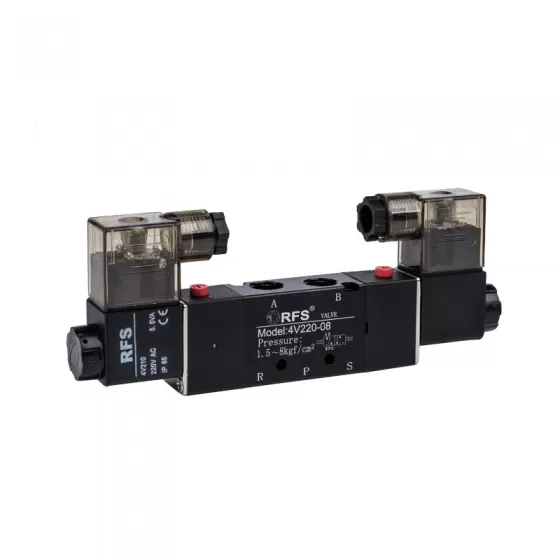7 Powerful Reasons to Choose a Solenoid Valve for Your System
When designing or upgrading a fluid control system, one component that consistently proves its worth is the solenoid valve. From industrial automation to home appliances, solenoid valves are the unsung heroes that make systems more efficient, responsive, and reliable.
But why are solenoid valves such a smart choice?
Whether you're an engineer, system designer, or maintenance technician, understanding the benefits of solenoid valves can help you make informed decisions and boost the overall performance of your application.
Here are seven powerful reasons to consider using solenoid valves in your system.
1. Fast and Reliable Operation
One of the most attractive qualities of solenoid valve is their rapid response time. Unlike manual valves or slower actuated systems, solenoid valves can open or close in fractions of a second with a simple electrical signal.
Case in point: In an automated car wash system, solenoid valves are used to control the flow of water and soap with millisecond precision. This ensures efficient washing cycles and saves water — something that would be hard to achieve with slower valve types.
Their electromagnetic mechanism makes them extremely reliable, reducing delays in critical operations.
2. Easy Automation and Remote Control
Solenoid valves are ideal for systems that require remote or automated control. Since they operate through electrical signals, they can easily be integrated into control panels, PLCs, and IoT-based smart systems.
This makes them perfect for:
Agricultural irrigation systems
Industrial automation lines
HVAC systems in large buildings
Home water filtration systems
With just the flip of a switch or a signal from a controller, solenoid valves can manage complex flow operations without the need for manual intervention.
3. Compact and Space-Saving Design
Solenoid valves are known for being compact and lightweight, especially when compared to other types of actuated valves. This makes them a preferred choice in space-limited environments like:
Medical equipment
Laboratory devices
Compact machinery
Their small footprint doesn’t mean a compromise in performance. Even miniature solenoid valves can handle precise control of gases and liquids in delicate systems.
4. Energy Efficiency
Solenoid valves consume power only when they change states (open or close), and some versions are even designed to latch, maintaining their position without continuous energy input.
Example: In a vending machine, a solenoid valve may open briefly to dispense a drink and then shut off, using electricity only during that short window. This on-demand energy usage minimizes power consumption and supports sustainability goals.
Additionally, low-power solenoid valves are now widely available, reducing electrical loads in battery-powered or off-grid systems.
5. Wide Range of Applications and Media Compatibility
Solenoid valves come in many materials and configurations, making them compatible with a wide range of media, including:
Water
Air
Oil
Steam
Corrosive chemicals
This versatility allows them to serve a broad array of industries, including:
Food and beverage
Oil and gas
Chemical processing
Pharmaceutical manufacturing
You can choose valves with brass, stainless steel, or plastic bodies, and seals made from EPDM, NBR, or PTFE — tailored to your medium and pressure needs.
6. Low Maintenance and High Durability
Because solenoid valves have few moving parts, they typically require minimal maintenance. This results in lower downtime and cost savings over the life of your equipment.
Manufacturers often build solenoid valves with corrosion-resistant materials and self-cleaning features, especially in models used in dirty or high-pressure environments.
Real-world example: In water treatment plants, solenoid valves are used for years with minimal wear, controlling everything from chlorine injection to backwashing filters.
When installed properly and maintained according to the manufacturer’s recommendations, solenoid valves can last for hundreds of thousands of cycles.
7. Affordable and Readily Available
Compared to other types of control valves, solenoid valves are generally more cost-effective — both in terms of purchase price and installation costs.
You can easily find solenoid valves in standard sizes, voltages, and configurations at most industrial supply stores or online platforms. This availability reduces lead times, speeds up system repairs, and makes them an accessible solution for small businesses and large enterprises alike.
And because they’re modular, replacing a damaged solenoid valve is often as simple as unplugging the old one and installing a new one — no complex calibration or special tools required.
Final Thoughts: Is a Solenoid Valve Right for You?
Choosing the right valve for your system is all about balancing performance, reliability, cost, and simplicity. A solenoid valve offers a winning combination of:
Quick actuation
Compact design
Versatility across industries
Efficient automation potential
Whether you're managing air flow in an industrial compressor, regulating water in a greenhouse, or controlling steam in a sterilization unit, solenoid valves are a smart, scalable, and dependable solution.
So, the next time you're evaluating options for fluid control, ask yourself: Can a solenoid valve do the job more efficiently?
In most cases, the answer is a confident yes.
Need help choosing the right solenoid valve for your application?
Reach out to a trusted solenoid valve supplier or systems integrator to get expert advice on materials, voltage requirements, and flow specifications.
Let the simplicity of solenoid valves bring precision and peace of mind to your system.





